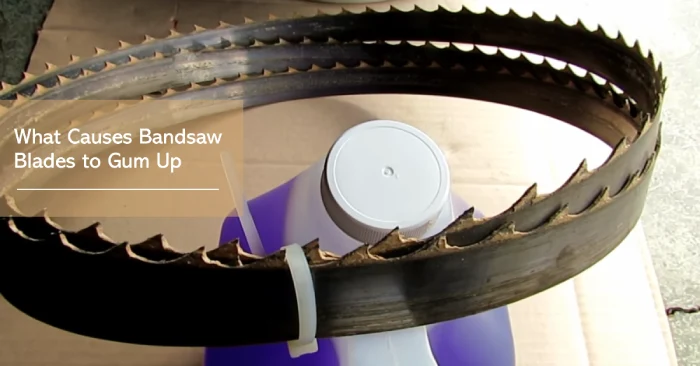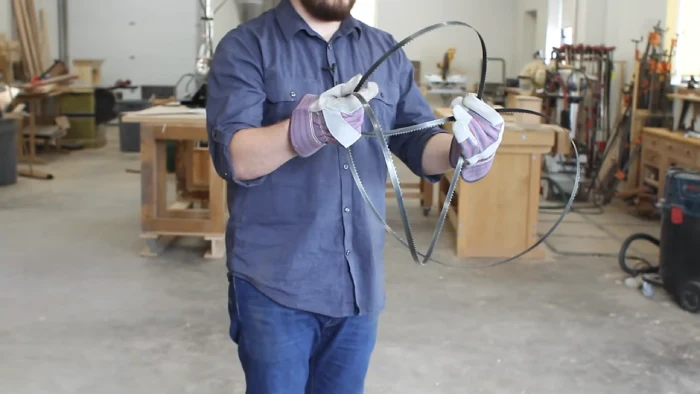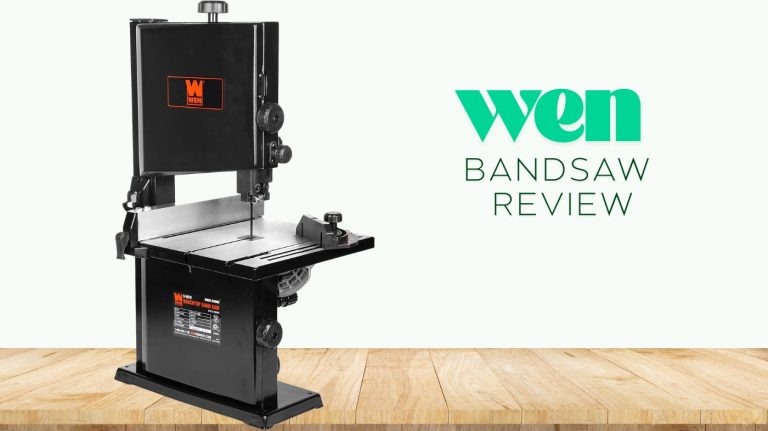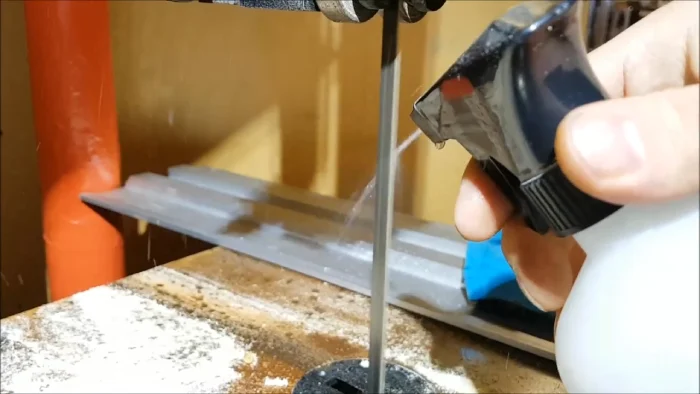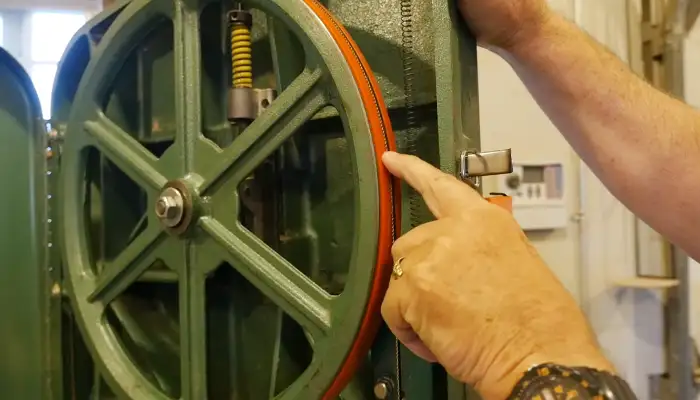What Causes Bandsaw Blades to Gum Up: 10 Scenarios
Bandsaw blade gumming is a common challenge faced by woodworkers and sawmill operators, impacting the efficiency and performance of the cutting process. According to my research, this issue arises from a combination of factors.
One of the main culprits is the wood resin content, which can build up on the blade and cause it to gum up. Also, using improper blade tooth selection, having dull or worn-out blades, improper blade setup, and blade tension issues can also lead to blades gumming up.
Here, I’ll delve into 10 common scenarios that can cause your bandsaw blades to gum up and how you can prevent them.
10 Causes Bandsaw Blades to Gum Up
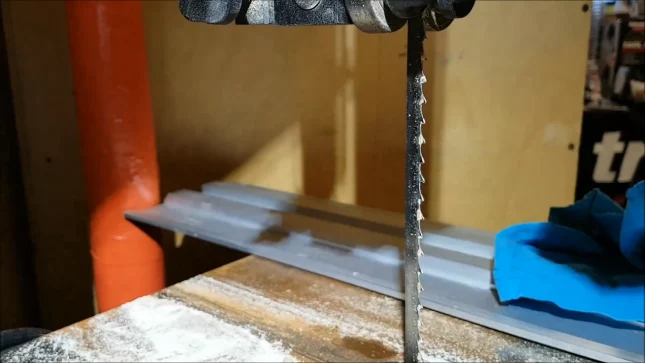
As per my findings, below are the top 10 scenarios that can lead to bandsaw blades gumming up:
- Wood resin content
- Improper blade tooth selection
- Dull or worn-out blades
- Improper blade setup
- Blade tension issues
- Feed rate problems
- Inadequate lubrication
- High pitch content in wood
- Incorrect blade guides
- Contaminants in wood
No 01. Wood Resin Content
High resin content in certain types of wood, such as pine, cedar, or eucalyptus, is a primary cause of bandsaw blades gumming up. These woods contain a higher level of resin or sap, which can melt and accumulate on the blade surface during cutting.
As the blade moves through the wood, the heat generated causes the resin to soften and stick to the blade. This buildup interferes with the blade’s ability to make clean cuts, resulting in increased friction and heat generation. The gumming issue can worsen, decreasing cutting efficiency and potentially damaging the blade.
When working with wood species with high resin content, regularly clean the blade and use lubricants or blade coatings to minimize gumming and maintain optimal cutting performance.
No 02. Improper Blade Tooth Selection
It’s crucial to select the appropriate blade tooth for the specific material being cut to prevent woodworking bandsaw blades from gumming up. Using the wrong tooth type can result in debris buildup and overheating.
Choosing the wrong type of blade tooth for the cut material can lead to ineffective debris clearance, causing the blade to overheat and the material to adhere to it. Blades with too few teeth per inch for softer materials or too many teeth for harder materials may not effectively clear away debris, leading to gumming.
It’s important to consider the hardness and density of the material when selecting the blade tooth type. Choosing the right bandsaw blade tooth prevents gumming and ensures smooth and efficient cutting.
No 03. Dull or Worn-out Blades
Blades losing their sharpness is a common factor in gumming up woodworking bandsaw blades. As blades become dull, they generate more heat during cutting, causing wood fibers and resin to adhere to the blade surface.
This accumulation of debris can create a sticky residue that affects the blade’s performance and reduces its cutting ability. Regular inspection and timely blade replacement are crucial to prevent this issue, particularly when working with resinous or green wood.
Dull or worn-out blades not only gum up more easily but also require more force to cut through the wood, putting more strain on the motor. To maintain optimal performance and prevent gumming, it’s essential to sharpen or replace blades as soon as they show signs of dullness or wear.
No 04. Improper Blade Setup
When the blade isn’t properly aligned, it may veer off course, causing uneven cutting. This places uneven pressure on the teeth, increasing friction and heat. The excess heat can cause the wood to stick to the blade, resulting in gumming.
Additionally, if the blade is offset or underset, it may not track properly, causing it to rub against the wood. This rubbing action generates more friction and heat, further contributing to gumming.
It’s crucial to ensure the blade is correctly set up, aligned, and tensioned to prevent these problems and maintain optimal cutting conditions.
No 05. Blade Tension Issues
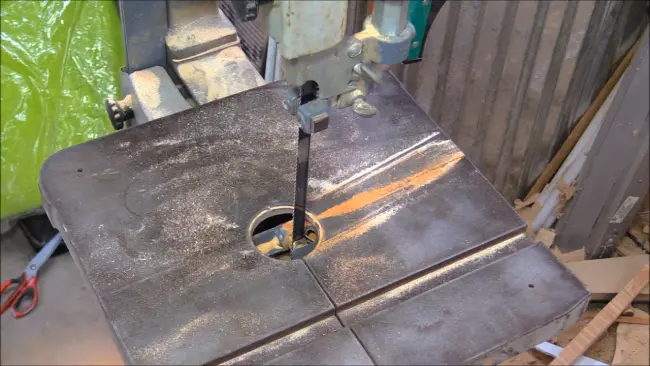
When blade tension is incorrect, woodworking bandsaw blades can experience gumming issues due to excessive heat and material accumulation. If the blade is too loose, it may deflect or wander during the cut, generating excess heat and accumulating material on the blade.
This buildup of material can cause the blade to become clogged, leading to decreased cutting efficiency and potentially resulting in the blade getting stuck.
On the other hand, excessive tension can also pose a problem. When the blade is overly tight, it can overheat and stick to the cut material. This can cause the blade to seize up and damage the blade and the workpiece.
Therefore, it’s crucial to properly adjust the bandsaw blade tension to prevent gumming issues and maintain optimal cutting performance.
No 06. Feed Rate Problems
An improper feed rate, either too fast or too slow, can lead to blade gumming.
When the feed rate is too fast, the blade doesn’t have enough time to clear the sawdust and debris, leading to clogging and gumming. Conversely, a feed rate that’s too slow allows the material to stick to the blade, transferring sticky substances like pitch and resin.
Finding the right balance in feed rate is crucial for preventing gumming and ensuring smooth and efficient cutting operations.
No 07. Inadequate Lubrication
Proper lubrication ensures smooth cutting and prevents the blade from overheating. Water or specialized liquid lubricants can reduce heat buildup and minimize friction. These lubricants create a protective layer between the blade and the wood, allowing easier and more efficient cutting.
However, avoiding excessive lubrication is important, as this can cause the blade to slip off the tires. Finding the right balance of lubrication is essential to maintain the performance and longevity of the woodworking bandsaw blade.
No 08. High Pitch Content in Wood
Woods with high-pitch content, like some varieties of pine, pose a specific challenge in this regard. When heated by the blade, the pitch melts and then sticks to the teeth and gullets, creating a sticky residue.
This gumming affects the blade’s ability to cut smoothly and increases friction, leading to overheating and potentially damaging the blade.
To prevent this issue, it’s essential to identify wood types prone to high pitch content and take preventive measures. This may include more frequent blade cleaning to remove any melted pitch and using appropriate lubricants to reduce friction and heat buildup.
No 09. Incorrect Blade Guides
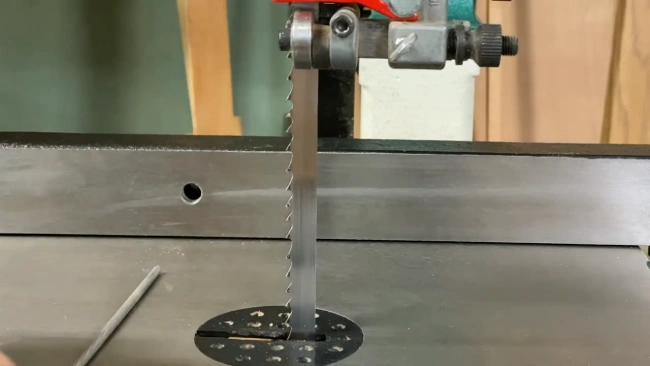
Incorrectly set blade guides can contribute to gumming problems in woodworking bandsaw blades. When the blade guides aren’t properly adjusted, they may fail to clear debris and residue during cutting effectively.
Maintaining proximity between the guides and the blade is crucial for efficient debris removal, which reduces the chances of gumming. If the guides are too far from the blade, they may not adequately remove the sawdust, resulting in accumulation and potential gumming.
To prevent this issue, ensure that the blade guides are correctly positioned, allowing them to clear debris as the blade moves through the wood effectively.
No 10. Contaminants in Wood
Contaminants present in the wood can contribute to gumming issues in woodworking bandsaw blades. When sand, dirt, or foreign substances are present in the wood, they can interact with the blade during cutting, causing increased friction and residue buildup.
This can lead to the blade becoming coated with a sticky substance, affecting its performance and accuracy.
To prevent gumming caused by contaminants, cleaning and inspecting the wood before cutting is essential. Removing any foreign particles or substances from the surface will reduce the likelihood of gumming.
Regular maintenance of the bandsaw, such as cleaning the blade and guides, is also crucial to ensure optimal cutting performance and prevent the accumulation of residues.
How often should I replace bandsaw blades to prevent gumming issues?
To prevent gumming issues, it’s crucial to regularly replace your bandsaw blades based on the type of wood being cut, blade sharpness, and intensity of use.
Resinous or green woods tend to produce more resin buildup on the blade, which can lead to gumming. In these cases, I believe replacing the blade more frequently may be necessary to maintain optimal cutting performance.
Additionally, inspecting the blade for signs of dullness, wear, or damage is essential. A dull blade is more likely to gum up, so it’s important to replace the blade as soon as it shows signs of dullness.
The intensity of use is another factor to consider. If you frequently use your bandsaw for heavy-duty cutting tasks, the blade may wear out faster and require more frequent replacement.
Is it possible to remove gum from bandsaw blades with WD40?
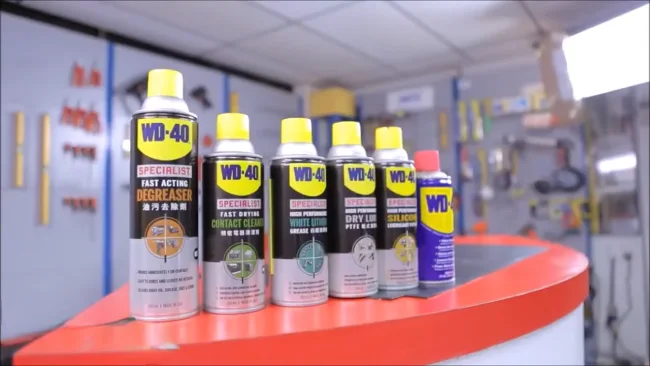
I know that WD40 can effectively remove gum from bandsaw blades, making it a valuable tool for maintaining optimal cutting performance. While WD40 is commonly known for its lubrication properties, it can also dissolve gum and resin buildup that can accumulate on blades during woodworking operations.
To remove gum from a bandsaw blade using WD40, apply the solution directly onto the affected area. Then, using a clean cloth, spread the WD40 evenly along the blade, ensuring the gum is fully saturated. The WD40 will penetrate the gum, softening it and making it easier to remove.
Does hydrogen peroxide remove gum from bandsaw blades?
When hydrogen peroxide is in contact with organic matter, it releases oxygen, which is ideal for breaking down gum and resin on saw blades. It’s a popular method used in both industrial and household cleaning applications.
To use hydrogen peroxide for removing gum from your bandsaw blades, I recommend applying a small amount of it onto the gum using a brush or cloth. Allow it to sit for a few minutes, giving it time to penetrate and break down the gum. Afterward, use a scraper or brush to remove the gum from the blades easily.
Tackle Your Bandsaw Blade Gumming Challenges
Bandsaw blade gumming is a multifaceted challenge influenced by material properties, blade-related factors, and machine maintenance. Armed with insights into the causes I shared, you can proactively address issues such as improper lubrication, blade selection, and feed rates to mitigate the risk of gumming.
Regular maintenance of the bandsaw machine is equally vital to sustain optimal cutting conditions. By adopting these preventive measures, you can ensure your bandsaws operate at peak performance, promoting precision cutting and minimizing the interruptions associated with blade gumming.
While WD40 can remove some gum, it isn’t always effective. Hydrogen peroxide may also be used, but I recommend consulting the manufacturer’s guidelines before cleaning.

